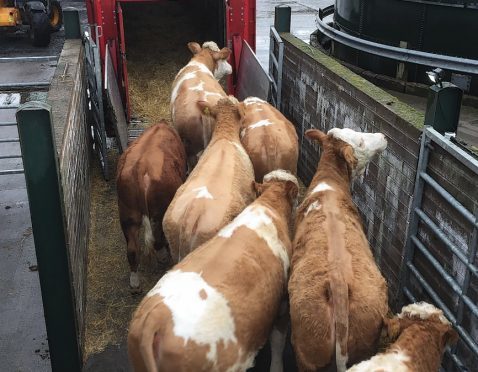Scottish Simmental breeders are celebrating after landing an export deal to send cattle to the Azores.
A group of 13 heifers and three bulls left Scotland earlier this month for the group of nine volcanic islands, which lie around 1,360 kilometres west of Portugal in the North Atlantic ocean.
The cattle were consigned from three different herds – the Moffat family’s Innerwick herd at Dunbar, East Lothian; Richard McCulloch’s Overhill House herd, which is managed by John Hughes, at Armadale, West Lothian; and Jim McLaren’s Knox herd at Crieff, Perthshire.
British Simmental Cattle Society chief executive, Neil Shand, said it was the largest consignment of British Simmentals to head to the Azores.
He said: “I was invited to the Azores last summer with a view to starting a co-operation with them and the society to help improve their genetics on the islands, which had until now came from Swiss and German bloodlines. The buyers were a collective group from various islands.”
Meanwhile, the breed society has announced plans to include female classification data for all animals being sold from next weekend’s Stirling Bull Sales onwards.
Mr Shand said: “The introduction of female classification will put the final piece of the jigsaw in place and give prospective buyers a full picture of what they are getting and the type of cow that the bull or sale animal is out of.
“In years gone by many of the senior stockmen/women would say they wouldn’t buy a bull without seeing its mother, with classification we get a very clear picture of what the mother looks like and all things good about her.”
Female classification evaluation is broken down into four separate areas – body confirmation, beef character, legs and feet, and mammary.
Mr Shand said classification can only be carried out when females are in-milk and feeding a calf, with each category individually assessed before a final score is given for the beast.
First-calved heifers cannot get the highest possible score, and a female must have a minimum of three calves to get classified as excellent (EX).
Mr Shand said: “We have added another tool to give more information to buyers and to help breeders be more selective in the females they keep for further breeding, if you stand still nowadays you can get overtaken very quickly.”










